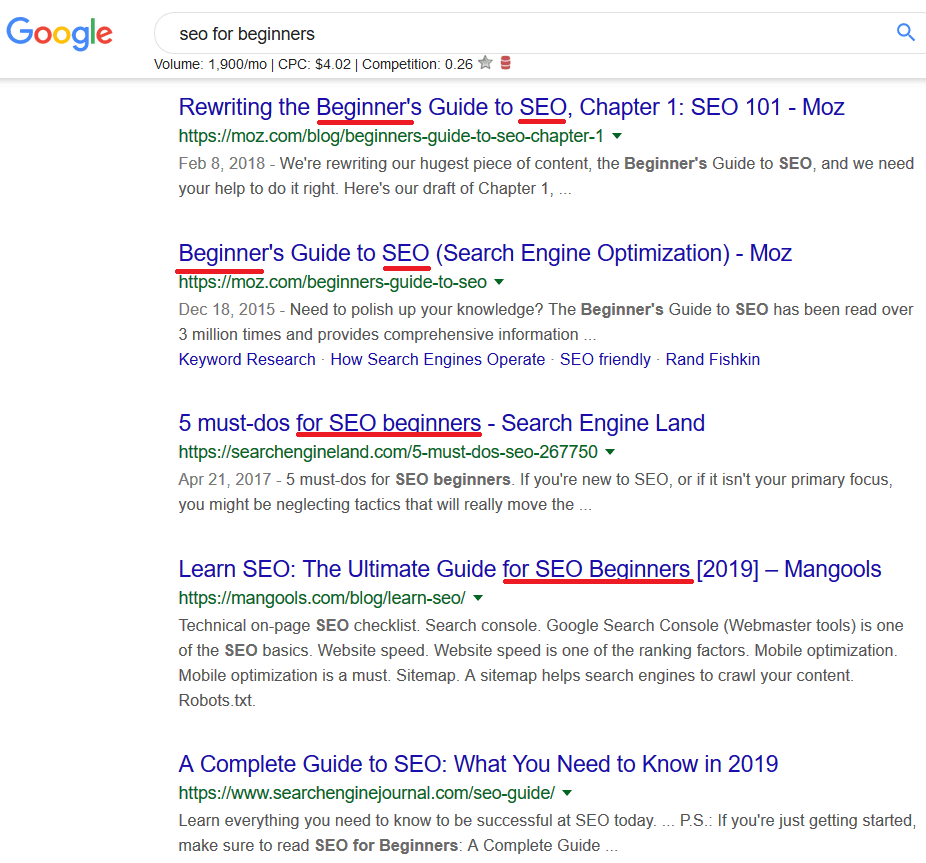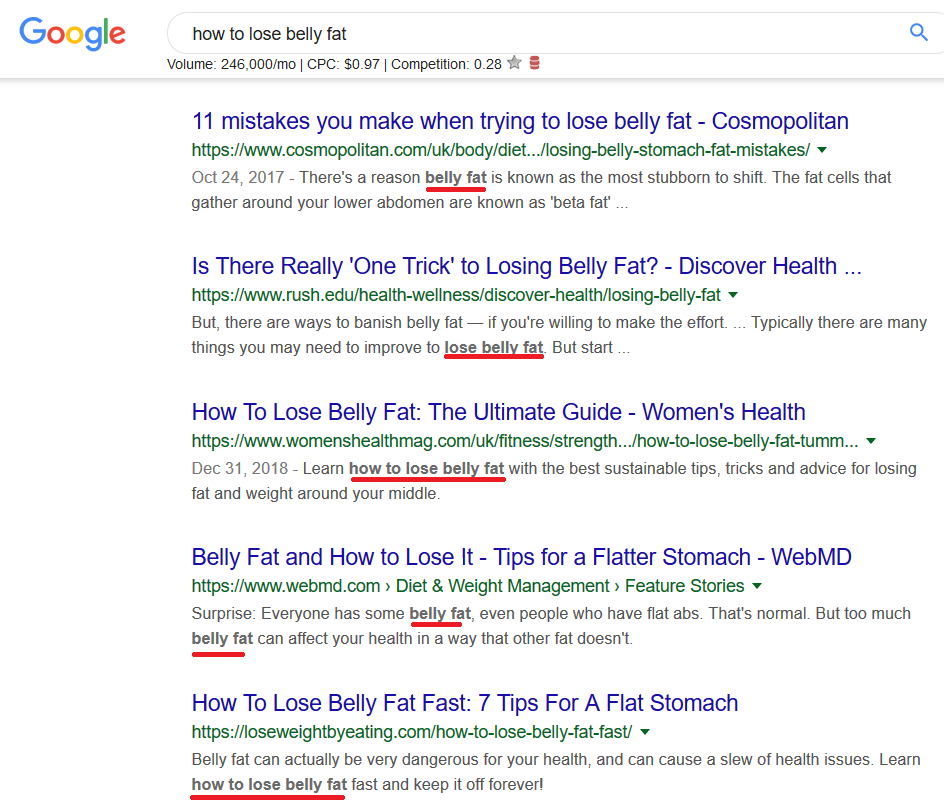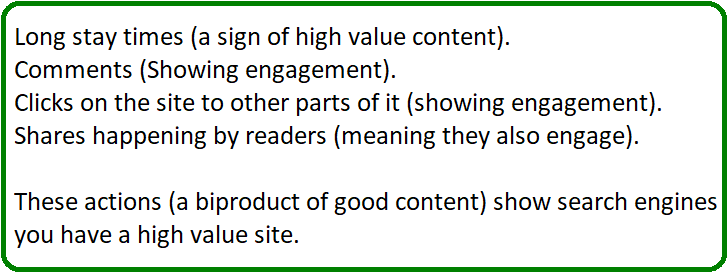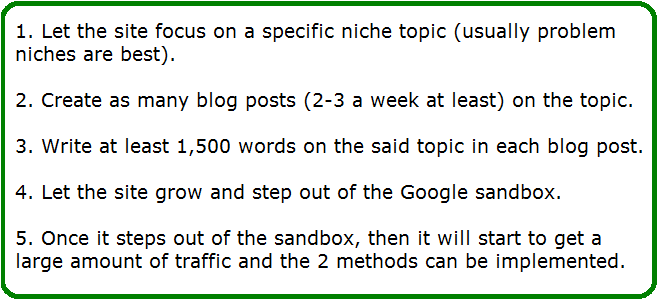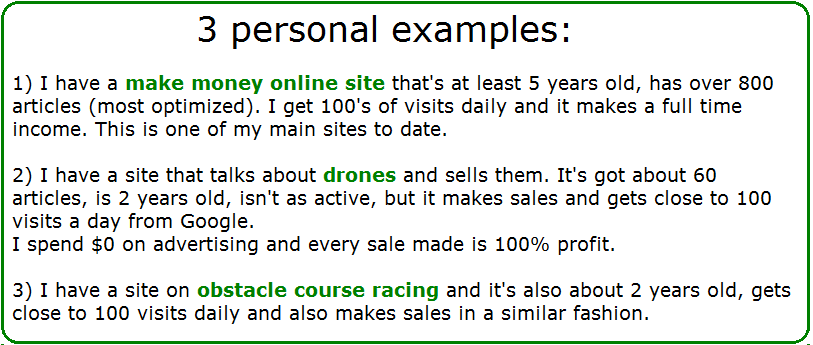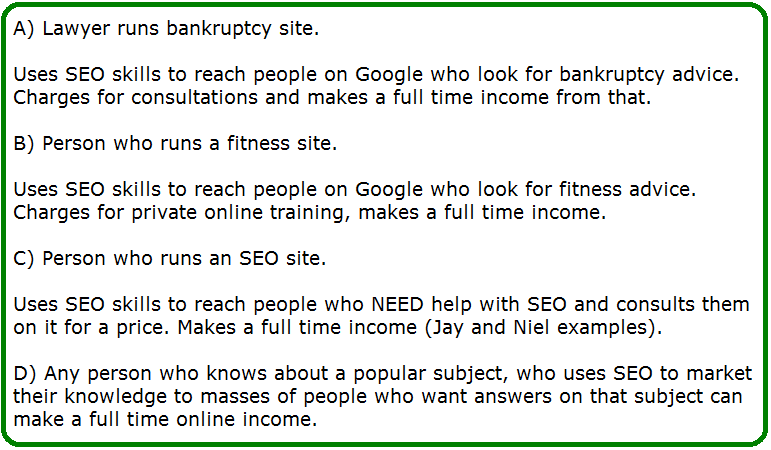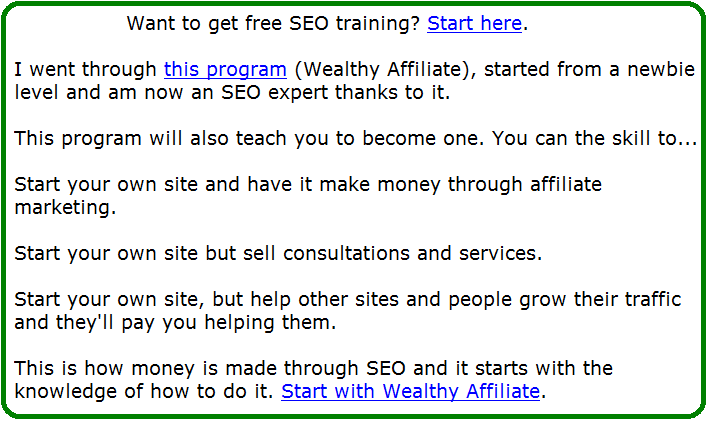There is a rule I follow for how often I post a new blog on my sites and it ranges from once a day to several times a week. This generally gets good SEO results.
Quite honestly, the best answer to this blog title’s question is: More often = better.
More specifically, I have a list of 5 scenarios when it comes to frequency of blogging and here they are:
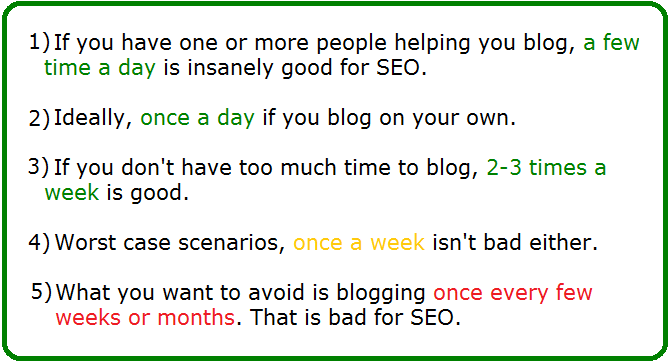
For better/best SEO results, you will want to stick to the top 3 when it comes to creating new blogs. Anything below that (4 and 5), and you are risking your rankings tanking, especially the last circumstance.
Why is posting frequency so important for SEO?
This is a question I see a lot, and there’s many people who have good rankings with their site wonder why they need to keep writing more, while they are on that high wave, and why not just leave the page alone, since they think the rankings will stay.
There’s a number of answers that encapsulate why…
Well the first answer to this question is that Google happens to consider your frequency of writing new content as being one of the more important ways it classifies your site. It’s actually a major SEO trend and has been for a long time.
You will notice (and you are welcome to look this up on Google search) that pages that rank highest, for the most competitive keyword terms are those that not only have a lot of existing blog posts, but also create new ones very frequently. There is a reason they are ranked that high and the frequency of creating new is one of those reasons.
Authority sites and blogs for that matter have many important traits, and frequency of content creation is one of them.
The truth is, as your blog grows (and it has to if it seeks to improve it’s SEO), you will want Google to visit it as often as possible (here’s how to do it) and see that you are not only writing new posts consistently, but also optimizing them in these ways.
10 critical points to understand why posting frequency matters for SEO:
You write a blog post, and target a keyword.
Once it’s published, you let Google know about it by fetching it (you can also leave it alone, publish it and let Google find it on it’s own, but fetching is the fastest way to get this process done).
Google sees you created new content and called them over to crawl it, and naturally, it’ll do it, and then, they’ll index it. Great, what’s next?
Well then that blog will go through a Google dance and likely rank for numerous keywords. You want this to happen, because the more keywords that it shows up for, the more exposure it gets.
Now you’ll want to replicate that and write a new post, target a new keyword and repeat the whole process over again and thus have your site show up for even more keywords.
The more you repeat this, the more Google will visit your page, and the more it’ll rank it for more and more keywords.
The more keywords it ranks for (and again, each new blog you create is meant to target different ones), the more exposure your site gets. This leads to more organic (SEO) traffic.
Overtime, the authority of your website will be growing and this authority rise, will actually RAISE your previous blogs higher in the search engines (as well as make new ones you create and publish hit higher positions on Google when you publish them), and this can literally cause your traffic to multiply.
Another thing to REALLY understand is that most high rankings do NOT happen instantly. Not unless your site is already a massive authority site.
Most of the time, what you post today, will only really rank high after a few months, so investing into frequently writing new blogs now, grows your site later and then when it hits the high authority, your new posts will now step in front of the line (meaning against competition) and rank higher, against other sites.
I don’t know if I made a good enough case for creating content frequently clear enough yet, but in all honesty, creating content in higher frequency is in literal terms one of the best ways to get more traffic from Google. It is 100% great for SEO.
Also another BIG tip you will want to implement is interlinking the content you create with one another, so each time a new one is published, and Google crawls it, having links point to previous blog posts you write will also have them get re-crawled and that is another major booster for rankings.
Real examples of the 5 above scenarios…
Since I mentioned that I went through each of them with different sites and saw how my SEO was affected, I can give you my anecdotal evidence…
1) The first scenario: When you blog multiple times daily.
While it is very hard to find great writers to blog on your site, if you can even get 1 person to do it, you can double your content creation frequency and produce several of them daily.
And if you have more than one, well then you’re gold and your site is going to conquer the SEO world. Considering you read my case above for creating content more frequently, imagine a blog that has multiple posts being made daily.
That site is going to explode with rankings, impressions and get traffic in countless numbers.
I had a site like this before and had 1 writer working for me. We managed to get 2 blog posts published a day and it did help rankings and traffic.
I also had a page where I desperately created new content at least 2-3 times a day (because I had been losing rankings from lack of creating new content from months before, so it caught up to me) and I almost went nuts from this, but through doing this over a period of a few months, I saw incredible results, with massive rise in rankings and traffic.
I will be showing you a case study of this for one of my site’s ranking reports below, which will clearly illustrate the importance (and results) of posting frequently and doing the opposite and how it affected my SEO.
Tip: For making sure every new content you create gets the MOST value from SEO, make sure it’s following these 10 optimization tips.
2) Posting once a day.
If you can manage this frequency on your own, you’re honestly doing great and I’ve had sites where I managed to perform at this level for a long period of time.
In fact, some of my SEO teachers advise this frequency as being the best, because it’s doable for one person.
3) Posting 2-3 times a week.
This is also a good frequency to stick to in my view and far more doable for beginner bloggers. Here you will see an improvement in rankings and traffic.
4) Posting once a week.
Should you ever run into a situation where you can’t blog often, try to least make sure it doesn’t go under once a week. This is the satisfactory frequency you may want to stick to if you can’t invest enough time into creating new content.
If your site is on a high in rankings and traffic (and it will happen from stick to the top 3 frequencies), maintaining a once a week frequency of making new content is not bad to keep your site’s rankings afloat.
5) Posting once a month, less or not at all.
Circumstances of all sorts can hit a website owner. They may need to leave their site alone for an extended period of time, during which they will not have time to create new blogs.
Just recently, such a circumstance happened to me…
I took a two week trip during which I was certain I’d have some time to create new content at least once a week, the bare minimum, yet, I wasn’t able to, because I was so tired from whatever I was doing on the trip and so for at least 2 weeks, my site didn’t exactly grow.
Other circumstances can hit people and have them stop doing the necessary things for an even longer period of time, months even.
One of the biggest circumstances that leads to this scenario taking place is laziness OR having too many sites to manage and create content on, especially if they are working alone. Eventually, you have to choose which one deserves most of your effort, but this redoubtably leaves the others unattended, and then that affects their SEO.
This is why I never recommend people create too many websites if they want to do SEO, they just won’t have the time to manage them all.
But anyway…
What happens in those cases where you stop for too long?
Well it’s nothing positive, but it’s really NOT the end of the site either. I would never recommend people JUST stop creating content to their site because whatever rankings they had prior to stopping, will not hold out forever. I’ll explain what this means in a moment.
I’ve had times where sites I owned grew a lot because I created new content a lot, but then for whatever reason, I couldn’t post there for a few months. So what happened?
Well let me give a few examples of the different results that occurred:
For 1 site, for this exact circumstance playing out, rankings stayed the same even though I stopped adding new content.
The reason this occurred was because the keywords this site was targeting had low competition, so while I didn’t post for months, new competition for the keywords I was ranking high for didn’t appear either and thus I was able to keep the same positions and keep getting the same traffic.
I still have sites that maintain the same page 1 positions for a decent keyword, and that’s ONLY because other sites haven’t come around with their own content trying to compete against it. Essentially, I’m monopolizing the keyword because there’s no other competition, but this is VERY rare.
For another site, this played out differently. During the time I stopped creating new content, during the second month of this pause, my rankings and traffic slipped gradually and this was because in this circumstance, the site and the keywords I was targeting were getting new sites targeting the same keywords, and those sites were able to outrank mine because they few, while mine stayed the same.
So generally, the advice I’d give is…try not to stop creating new content.
Essentially, your site’s authority, if it’s high, will stay high for awhile, even if you don’t add new content, but there’s good odds, your site will be outranked by others overtime, if you don’t add new content/grow the site.
And I can also say that in MOST cases, not creating new content at all for a long period of time, will in 99% of cases erode whatever SEO results the site has.
How blogging frequency affects SEO & traffic, 1 case study:
To illustrate just how important blogging frequency is, I would like to draw your attention to the follow chart of one of my sites, which is several years old, and went through periods where I was posting a lot, to periods where I stopped doing that for a long period of time.
Here is how this affected my traffic, my rankings and the site’s overall success:

So remember I said that what you post today takes time? This is important for this graph and let me explain why…
In 2016, I created content like a madman (once a day), then 2017 is when this investment really paid off (1,000+ visit days) because the work put in throughout 2016 began to rank high throughout 2017.
However, this made me lazy and I really lowered my content creation frequency in 2017 while on this traffic high, and thus suffered in 2018 as you can see.
However, halfway into 2018, I started back up again and created new content several times a day and now, in 2019, the traffic is rising again.
This is to illustrate how blogging works when it comes to seeing the results. You post today to rank and bring in traffic tomorrow basically.
So overall, the key tips to takeaway are as follows:
I have 4 tips to share with you:
Tip 1:
Use the 5 point chart at the very beginning of this article and stick to the first 3 ideal frequencies you should be creating content at, from several times a day to several times a week and you should be fine.
Tip 2:
At worst, if you go on vacation or something happens where you just can’t maintain this frequency, write more blog posts ahead of time, and publish it in a spread out approach as you’re on hiatus.
For example, if you write 3 blog posts a week, and then have to take a 2 week vacation, write 9 ahead of time, publish 3 the week before you leave, another 3 during the first week of your vacation and then another 3 on the second, then when you return, maintain the same pace.
Tip 3:
You can always raise the frequency at any point, which as I explained will only lead to better SEO results (more rankings, more fetching, more Google crawling, and just positive SEO results).
Tip 4:
It’s not a catastrophe if you stop creating new content for an extended period of time. If you run into this situation or are currently in it, just raise the frequency you’re writing at and start to grow the site faster, you will be able to raise the site back up.

